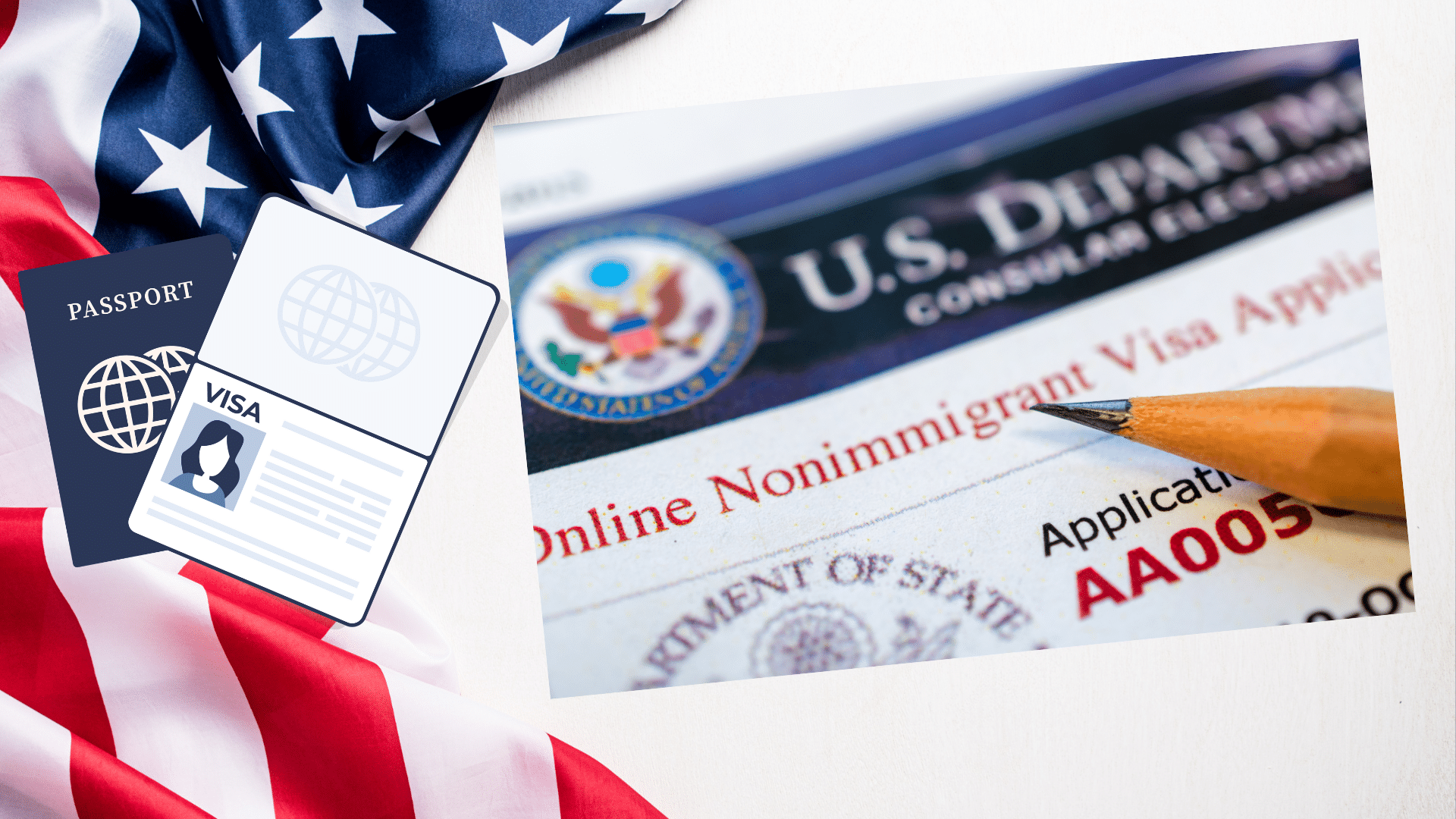The L-1 visa (Intracompany Transferee Visa) category enables multinational companies to actively transfer specific types of employees from a qualified foreign office to the U.S. for continued employment. This proves highly beneficial for companies engaged in business operations both in the United States and abroad, as it facilitates the smooth transfer of employees between offices in different countries whenever required.
What is L-1 Visa?
To qualify for either type of L-1 visa, the employee’s company needs to fulfill two essential requirements. Firstly, there must be a well-established relationship between the foreign-based business and a business entity in the United States. This relationship can take the form of a parent company, affiliate, subsidiary, or branch.
Secondly, the company must be actively engaged in business operations both in the United States and at least one other country, or have clear plans to do so during the period covered by the L-1 visa. Additionally, the employee must have a minimum of one year of continuous work experience with the foreign business within the preceding three years. Meeting these criteria ensures eligibility for the L-1 visa program.
Types of L-1 Visas
The L-1 visa program caters to two distinct categories of employees. Executives and managers are eligible for the L-1A visa, which grants them the opportunity to apply and obtain this visa type. L-1A visas are specifically designed for employees holding significant decision-making or supervisory roles within the company.
On the other hand, other foreign employees can seek an L-1B visa. This visa is tailored for workers possessing specialized knowledge about the company’s products, processes, organization, equipment, and other crucial aspects. Generally, an L-1B visa is only accessible if the particular employee’s presence is essential for the seamless operation of the business in the United States.
Though the official USCIS regulations do not explicitly mandate an L1 business plan for visa application, it is vital to convince the USCIS that your position is legitimate and the business is well-prepared for success. Therefore, having a well-crafted L1 business plan can prove to be an invaluable asset in gaining approval for the visa application.
Requirements for L-1A Visa
To be eligible for the L-1A visa, which is the Intracompany Transferee visa for Executives or Managers, the employee must have been working with the company for a minimum of 1 year during the last 3 years. This period of employment must be continuous and without any breaks. Additionally, the employee must possess either executive capacity or managerial capacity. In simpler terms, they should have the authority to make company-wide decisions and/or oversee the work of others, managing operations effectively.
Requirements for L-1B Visa
To meet the requirements for the L-1B visa, known as the Intra Company Transferee with Specialized Knowledge, the employee needs to have a continuous employment history with the company for at least 1 year within the last 3 years. Additionally, the employee must hold specialized knowledge or advanced expertise that plays a crucial role in the company’s operations.
How an L-1 Visa Lawyer Can Help You
Just as you would engage an expert to manage any highly-specialized task, an immigration attorney plays a pivotal role in obtaining an L1 visa. At Truely
Wonder, our lawyers are committed to safeguarding your best interests and rights while representing your case. They take charge of ensuring all documents are meticulously handled, filed accurately, and in compliance with the requirements. In the confusing and complex world of immigration law, you need the right advocate by your side!
L-1 Visa Benefits
Foreign workers, who are eligible for various types of employment-based visas, may find the L-1 visa particularly attractive due to its numerous key benefits.
One significant advantage of the L-1 visa is that spouses and dependents of L-1 visa holders qualify for an L-2 visa. Unlike the H-4 visa, which is the dependent visa for H-1B spouses, the L-2 visa permits the holder to work in the United States during their stay.
Another favorable aspect is that the L-1 visa is not subject to any numerical limits, unlike the H-1B visa, which has a limited annual quota.
A major perk of the L-1 visa is the option for companies to apply for blanket petitions for their employees to qualify for either an L-1A or L-1B visa, streamlining the application process.
Moreover, the L-1 visa is often renewable for a period of 5 to 7 years, providing greater stability compared to the one-year validity of a temporary business visa (B-2).
For L-1A visa holders, there’s the added benefit of being strong candidates for an EB-1C green card, specifically designed for managers and executives, making it an excellent choice for those aiming for lawful permanent residency.
Furthermore, the L-1 visa allows individuals to enter the U.S. with the intention of starting a new office, branch, or affiliate if such a presence does not already exist, presenting attractive opportunities for expansion and growth.
Who is L-1 Visa For?
Undoubtedly, pursuing an L-1 visa offers numerous benefits. Below are compelling reasons why this visa might be the perfect fit for you:
- Path to Green Card: The L-1 visa is a dual-intent visa, allowing L-1 holders to apply for lawful permanent residence when eligible. This appealing option makes it a preferred choice for many foreign workers with aspirations for a green card in the future.
- Relatively Easy Requirements: If you don’t meet the criteria for other U.S. visas such as O-1 or are ineligible for the TN visa, the L-1 visa stands out with its relatively easier-to-meet requirements, potentially making it the deciding factor for your immigration plans.
- Stay with the Same Company: If you wish to avoid job hunting or changing employers in the U.S., the L-1 visa is a great option. You can continue working for the same company as in your home country, only transitioning to its American counterpart. It’s essentially an internal transfer within the company, not a completely new job at a different company.
- No Waiting for Priority Dates: Unlike H-1B visas, there are no annual limits for L-1 visa applicants. This means you won’t have to endure long waiting times or participate in a lottery system, providing a quicker and more predictable process.
- Extended Stay: The L-1A visa allows you to stay in the U.S. for up to 7 years, and the L-1B visa for up to 5 years, provided your extension application is approved. Compared to other visas, the L-1 offers a significantly longer period of stay.
- Spouse and Children’s Work Authorization: An advantage not available with some other U.S. visas is that your spouse and children can work in the U.S. on the L-2 visa. They are eligible to obtain Employment Authorization Document (EAD), providing increased flexibility and opportunities for your family.
We have successfully assisted numerous international companies in transferring their workers from overseas offices to their U.S. counterparts. Our mission is to make the entire experience as seamless as possible. Schedule a consultation today and discover how we can help you!
What is the L-1 Visa Process?
Obtaining an L-1 visa is a relatively straightforward process compared to other visas:
The applicant initiates the process by filing an I-129 form with the United States Citizenship and Immigration Services, while providing supporting documentation to establish the company’s and the employee’s eligibility for the L-1 visa.
Upon approval of the application by the USCIS, a notice of action is issued, granting the applicant the option to either apply for the visa at a United States embassy or consulate in their home country if they are outside of the U.S., or apply for a change of status while already inside the country.
For those outside the U.S. needing consular processing, they must complete an online DS-160 visa application and present the confirmation, along with the filing fee, at the consulate or embassy. Subsequently, they will undergo a personal interview with an immigration officer to assess their eligibility for the L-1 visa.
Upon successfully passing the interview, the applicant will be issued their L-1 visa, granting them the opportunity to commence work for their employer in the U.S.
L-1 Visa Required Documents
When applying for an L-1 visa, several documents must be submitted, as it is an employment-based visa requiring both the employer and employee to present relevant documentation during the process.
For the U.S.-based company and the foreign company, the employer will most likely need to submit the following documents:
- Financial statements
- Corporate by-laws
- Articles of incorporation
- Description of business activities
- Tax filings
- Audited accounts
- Many other relevant documents.
On the other hand, the employee’s set of documents, which the USCIS considers in the L-1 visa application process, will include:
- Education diplomas or certificates
- Income tax records
- Valid passport with at least six months validity
- 2 passport photos
- Letter of reference from a supervisor
- A letter from the employer requesting the L-1 visa
- Employment verification letter
- Up-to-date resume.
Keep in mind that depending on your background and the nature of your employment, you might also need to submit additional documents. Therefore, it is crucial to consult with an experienced immigration attorney to ensure that you have all the required documents for a successful L-1 visa application.
How Long Is the Overall L-1 Visa Processing Time?
The processing time for your I-129 petition may vary widely as each USCIS service center handling the petitions has a different workload. However, many attorneys generally account for an average processing time of around six months.
It’s worth noting that the processing times for both L-1A and L-1B petitions are the same since they both require the I-129 petition.
Premium Processing
All visas utilizing the I-129 or I-140 petition forms are eligible for premium processing, a valuable feature that can significantly reduce your L-1 processing time from several months to just 15 calendar days. If, for any reason, the USCIS fails to process your petition within this expedited timeframe, your employer will be entitled to a refund of the premium processing fee.
While it’s essential to note that premium processing does not guarantee approval of your petition, it can serve as a convenient tool if you require expedited entry to the U.S. Speak with your L-1 visa lawyer to determine if this service aligns with the specific needs of your case.
Grace Period
If you faced a denial for your extension or transfer of status, or if your employment was terminated or concluded for any reason, you might be curious about the existence of an L-1 grace period. However, it is important to note that there is no official regulation that provides for an L-1 grace period.
L-1 Visa Fees
Let’s break down the necessary fees associated with obtaining your L-1 visa:
- I-129 basic filing fee: $460
- Anti-Fraud Fee: $500
- Public Law 113-114 Fee: $4,500 (This applies only if your employer has more than 50 employees, with over half under L-1A, L-1B, or H-1B status.)
- ACWIA Training and Education Fee:
- $750 for employers with a workforce of 25 or fewer.
- $1,500 for employers with a workforce of 26 or more.
Additionally, if you go through consular processing, you’ll need to pay the DS-160 application fee of $160.
It’s important to note that all the above fees are the responsibility of your employer, not yours. Furthermore, the ACWIA and Public Law fees are one-time fees that do not apply to L-1 transfers or extensions.
Apart from the fees mentioned earlier, you may also come across other costs during the L-1 visa process. These may include fees for an immigration attorney, who can guide and support you throughout the application procedure, ensuring a smoother experience.
Moreover, there is an optional premium processing fee of $2,500 from USCIS, which can be paid either by you, the beneficiary, or your employer. Opting for premium processing can expedite the visa processing time to just 15 calendar days, a valuable option for those who need a faster response from USCIS.
L-1 Blanket Petition
Qualified employees can skip the I-129 form and proceed directly to an embassy or consulate for visa processing by utilizing L-1 blanket petitions. To be eligible for this blanket permission, companies need to meet the L-1 general requirements and have a minimum of three branches, affiliates, or subsidiaries.
In addition to these criteria, companies must also fulfill one of the following conditions:
- Successfully applied for 10 or more L-1 visas in the previous 12 months,
- Have U.S. subsidiaries or affiliates with a combined annual sales of at least $25 million, or
- Employ at least 1,000 people in the United States.
L-1 Visa Requests for Evidence
If the USCIS identifies any discrepancy or inconsistency in your petition, they may issue a Request for Evidence (RFE) instead of outright denying your petition. This RFE will outline the concerns that the USCIS has regarding the petition, such as incomplete or insufficient information, lack of qualifications, or suspicions raised about the company.
If you receive an RFE, promptly inform your immigration attorney. There is a relatively short timeframe for providing a response. Failing to respond in a timely manner could put your L-1 visa petition at risk of being denied. Acting swiftly with the guidance of your immigration attorney is crucial to address the USCIS concerns and ensure a successful outcome for your application.
How to Apply for an L-1 Visa Extension
If you wish to obtain an L-1 visa extension or renewal, the process involves many similar steps as the one for the original visa. Your employer must file a new petition for you before the expiration of the I-94 departure date.
In addition to the petition, you will need to submit several documents, including letters of support and details from your employer regarding your position during the past three years of your stay under L-1 status.
Fortunately, if you have traveled abroad during your stay, you may have the opportunity to recapture that time and use it to further extend your L-1 visa. To do this, you will need to provide physical documents as evidence of your departures from the country (e.g., boarding passes, plane tickets, etc.). This provision allows you to maximize your L-1 visa duration and continue your work in the United States with ease.
How Truely Wonder L-1 Visa Attorney Can HelpÂ
Having an expert by your side is crucial in navigating the complexities of immigration law, and it can make a significant difference in avoiding delays or obstacles that may consume both your time and money. To ensure that your L-1 visa petition is filed accurately from the outset, it is highly recommended to retain an immigration attorney. With their expertise and guidance, you can increase your chances of a successful and efficient application process.
Likewise, if you have aspirations of transitioning from an L-1A visa to a Green Card, having a professional to guide you through the process is essential. An immigration attorney can provide valuable assistance in understanding the requirements, preparing the necessary documentation, and ensuring a smooth transition towards obtaining permanent residency. Their support will prove invaluable as you pursue your long-term goals in the United States.
To schedule a consultation with Truely Wonder L-1 visa lawyer, just fill out this simple form! It’s an easy way to get in touch and discuss your needs.


